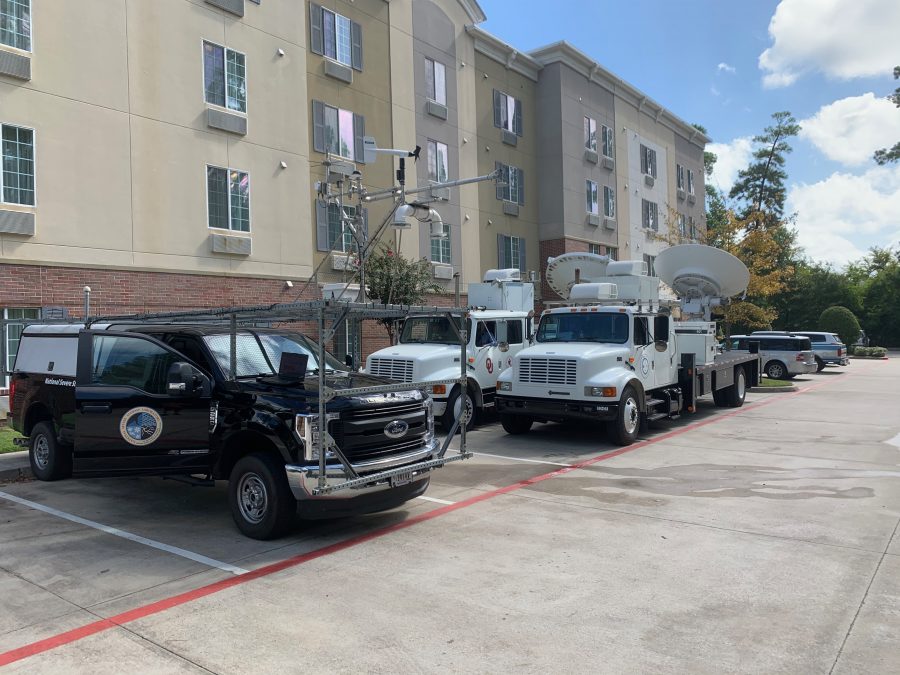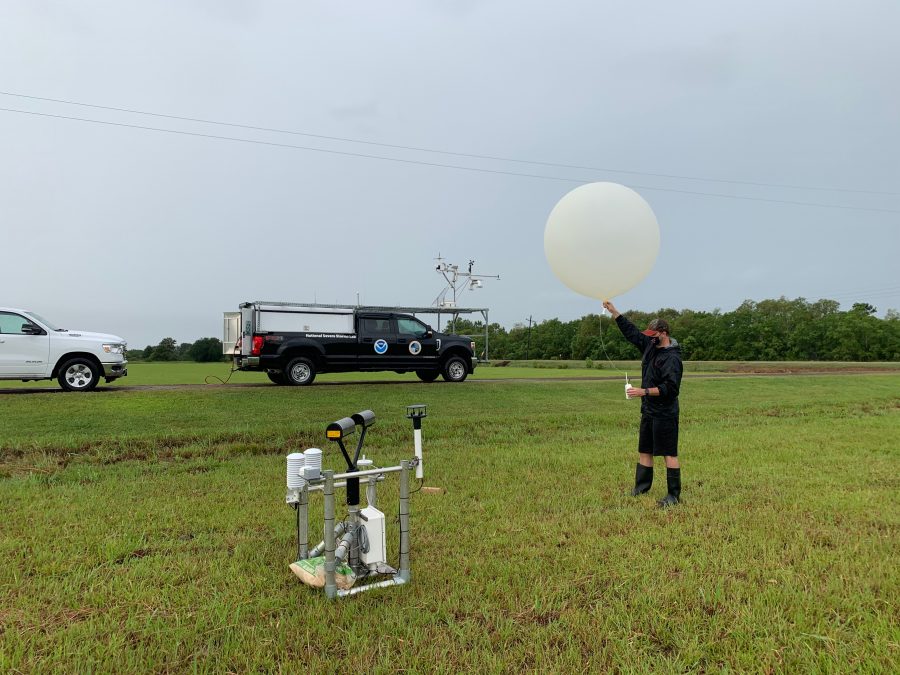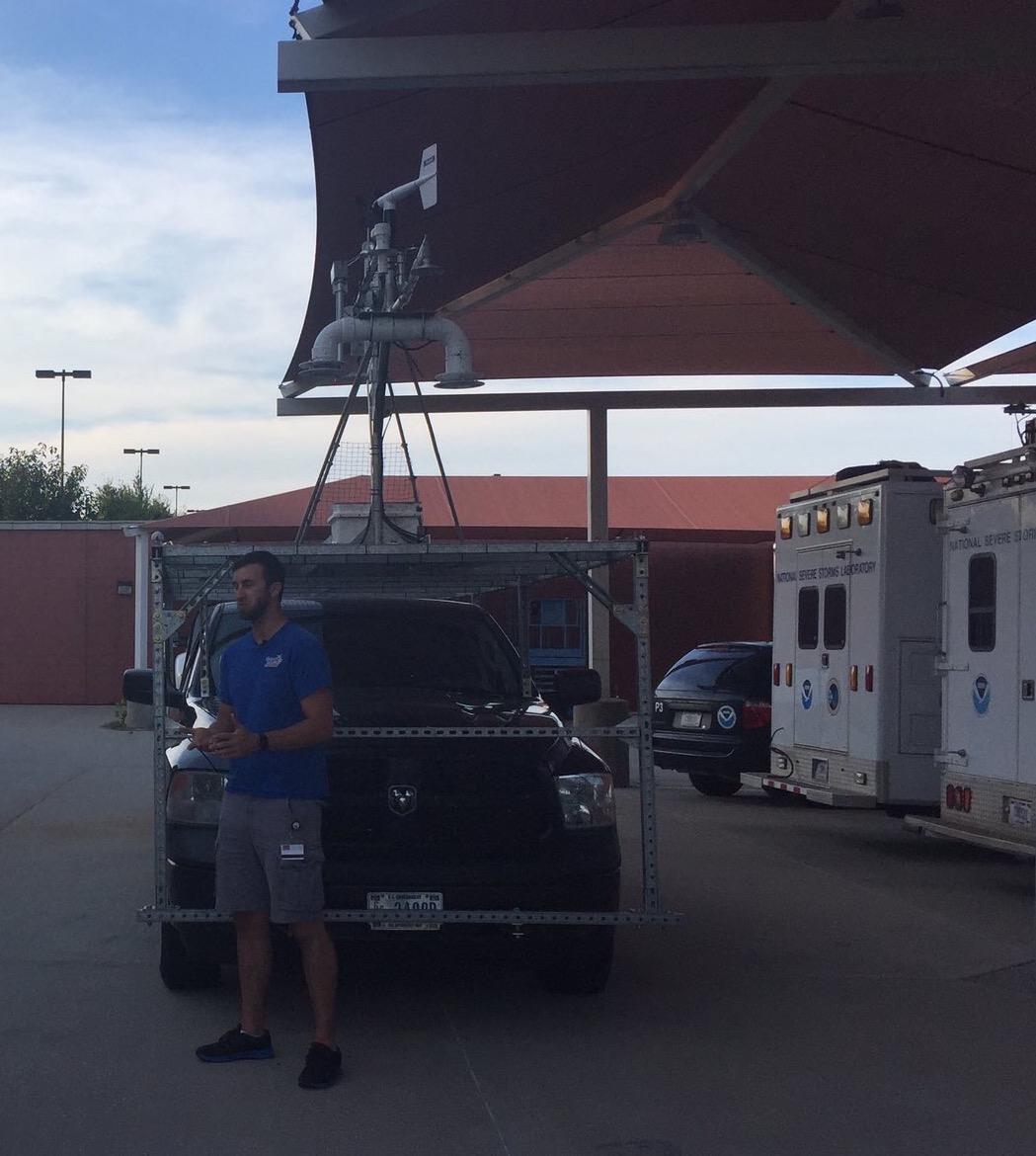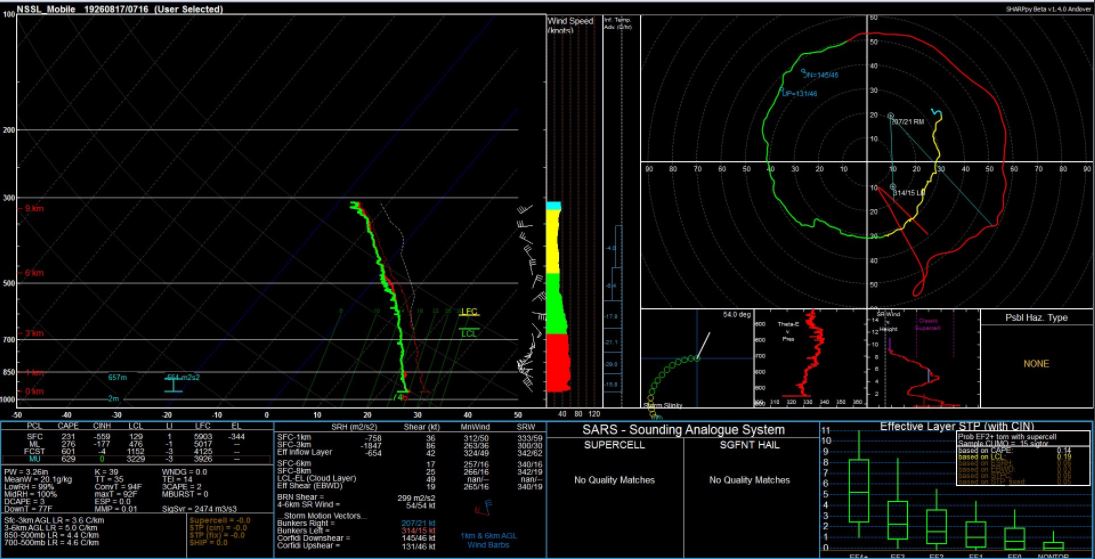A team of research scientists from the NOAA National Severe Storms Laboratory and the University of Oklahoma have traveled to the Texas-Louisiana border near the Gulf of Mexico to collect data during the landfall of Hurricane Laura.
We encourage people to visit the National Weather Service website for the latest forecast. weather.gov
The team, led by OU School of Meteorology Professor Michael Biggerstaff and NSSL Research Scientist Sean Waugh, is working closely with colleagues from Texas Tech University, the University of Florida, the Center for Severe Weather Research, and the University of Alabama-Huntsville.
Data collected by the team will be shared in real-time with NOAA National Weather Service Forecast Offices and emergency managers in areas affected by the storm.
NOAA NSSL deployed a truck with weather instruments attached, known as a Mobile Mesonet, along with small portable weather platforms. The Portable In Situ Precipitation Stations, or PIPS, have sensors to measure temperature, pressure, humidity, wind speed, and direction. In addition, PIPS determine the distribution of particle sizes by using an instrument called a Parsivel disdrometer to measure the number and size of any object that falls through it.

Team members deployed include OU Data Scientist Gordon Carrie, and Cooperative Institute Research Scientist Kim Elmore, with doctoral students Addison Alford and Noah Brauer and undergraduate students Robert Moore and Jeffrey Stevenson.
The OU researchers will collect data using mobile radar units known as SMART (Shared Mobile Atmospheric Research and Teaching) radars, operated through the Cooperative Institute for Mesoscale Meteorological Studies and the College of Atmospheric and Geographic Sciences.
The radars are used to map the maximum winds observed during landfall, determine the duration of severe winds at each location within their domain, and evaluate the impact of tornado-like mesovortices, small-scale rotational features found in storms created by surface heating. These mesovortices are often found on the inner edge of the eyewall during landfall.
Combined data from these tools can provide more insight into landfalling hurricanes, especially the severe winds hurricanes bring and the damage they may cause.

For example, damage to homes and businesses is associated with more than just the maximum wind speed. Wind gusts, duration of extreme winds, water intrusion, and the change in wind direction experienced by a structure during a wind event all impact building damage. Different parts of the hurricane create greater gust factors than other parts.
The project is sponsored by the National Institute for Standards and Technology as part of their National Windstorm Research Initiative.



